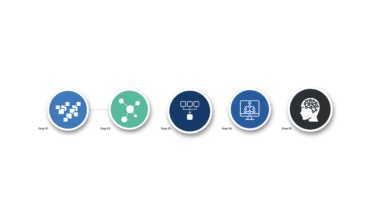The breakfast meeting held on 26th September in Stockholm brought a series of enlightening insights into the evolution of virtual and hybrid IR events. Here’s a glimpse into the themes and points from the event.
Capital Market Days (CMDs)
Format (virtual vs hybrid, pre-recording):
Curiosity about and preferences between hybrid and fully virtual events emerged as a key point of discussion. Though tried and tested, hybrid models have cost implications proven sometimes unnecessary by increased virtual adoption and the potential for a reduced experience for the virtual audience. Excessive ‘Zoom fatigue’ was conversely referenced as a deterrent for entirely virtual adoption. Setting a precedent for one as an expectation thereafter is a concern that creates some apprehension to innovating, yet selection between the formats was discussed as needing to reflect the company culture and purpose of the individual event.
The significance of consulting providers on pre-recording and all innovations available was highlighted during the event, drawing attention to the evolving preference for IR-led moderation. This shift has been attributed to the challenges posed by conference call operator moderation, particularly concerning pronunciation, local language, dialect, reliability, and tone nuances.
Timing and location:
Conversations at the meeting also highlighted the pivotal role of meticulous timing and thoughtful location selection in orchestrating successful events. Many companies have experienced the benefits of synchronising their events with already scheduled customer events, for example scheduling an investor event near a product event, optimising resource utilisation, and realising substantial savings. Selecting venues away from bustling commercial centres can enhance participation and minimise absenteeism.
Cadence:
In addition, the roundtable agreed that large companies maintain a consistent schedule of events to sustain stakeholder interest, often regardless of substantial content, with some stakeholders expecting interactions annually or every other year to sustain stakeholder interest and maintain their market presence. Smaller Companies in a normal macroeconomic environment should be orientated around three to five year financial targets. In situations lacking substantial developments for a Capital Market Day (CMD), a Capital Market Update (CMU) addresses significant changes like management reshuffles or strategic shifts.
Assessing the effectiveness of IR programmes:
Emphasis was placed on the importance of quantifying Investor Relations (IR) programme engagements. Companies are increasingly transparent about their interactions and actively evaluate their effectiveness and conversion rates. Detailed attention to invitation lists and subsequent engagement is pivotal, underscoring that a Capital Market Day (CMD) is an integral part of the programme rather than an isolated occurrence.
Annual General Meetings (AGMs): The shift to virtual
Given their enhanced control and security, the participants discussed the significant shift towards virtual AGMs despite some lingering legal concerns and potential technology issues. Though much engagement is achieved through the postal vote, reliability and confidence in controlled modern virtual voting capabilities has increased.
Roadshow organisation
The discussions underscored the challenges in organising roadshows with increased remote work among investor teams and avoiding Mondays/Fridays based on US/UK schedules due to non-attendance. Coordination of leadership calendars with that of investors to achieve physical meetings is more challenging than before, though worth it when achieved. Virtual investor meetings, on the other hand, were cited as having also produced positive outcomes due to the ease of more parties attending. Extensive and consistent preparation was identified as key.
Results events
Discussions focused on video vs. audio only for results events and the benefits of both. One large cap mentioned seeing a 3-4x increased engagement with video and the ability to save on costs of other programmes when video was optimally used for results events. The use of video, particularly AV services, was referenced as a matter of optics, reflecting the company culture and/or cost management.
The privacy afforded by audio only has benefits of management coordination – be it notes, scripting, or discussing Q&A – during the event, with a wariness of event sentiment analysis with modern tools providing investors indications of the underlying story
Perception and acceptance of free alternatives:
The participants also believed companies generally hesitate to utilise free services, often due to concerns over reliability and the added responsibility of administration. However, in a landscape shaped by COVID-19, management has become more tolerant of technical glitches and interruptions, recognising how common such experiences in the current environment have been.
Conclusion
The Breakfast Meeting in Stockholm provided insight into the evolving landscape of corporate events, emphasising the importance of strategic planning, the irrevocable nature of transitioning to virtual events, and the acceptance of new technologies. It highlighted the essential considerations and innovative approaches in organising events, measuring IR activities, and managing expectations in a post-COVID environment. The discussions and insights from this event will undoubtedly contribute to shaping future strategies and methodologies in corporate virtual and hybrid IR events.
For more information on what was discussed at the breakfast event and the evolving landscape of investor relations events, book a meeting with a Q4 rep!


